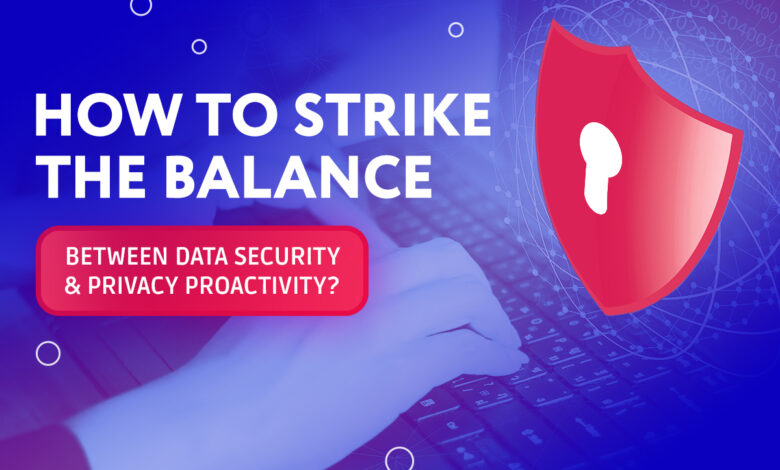
Security concerns have taken center stage in recent years. Apple, known for its commitment to user privacy, has set a precedent that many are following. Google, too, has been proactive, rolling out updates to boost privacy measures.
For companies navigating this landscape, the challenge is two-fold: ensuring their customer data remains uncompromised and simultaneously upholding users’ rights, particularly when leveraging user data for personalized advertising.
So, how do businesses strike this delicate balance as the industry evolves? At AdTech Holding, a company deeply rooted in various projects, including ad networks, they have grappled with these questions first-hand, striving to balance data security with user trust.
Keeping Data Safe and KYC
One hallmark of AdTech Holding’s approach, especially within its ad network projects, is its steadfast commitment to a robust KYC (Know Your Customer) procedure. KYC isn’t just a regulatory obligation—it’s an emblem of trustworthiness for AdTech Holding.
For those unfamiliar, the KYC procedure involves a systematic process wherein ad networks verify the identity of their clients, ensuring both parties are secure in their interactions. This process, while essential, requires collecting certain client information. How, then, can companies ensure that this sensitive data remains guarded?
Tips for a Robust KYC Procedure
- Secure Data Storage: Incorporate secure third-party databases to cross-check client details against their submitted documents. Meld this with your in-house systems for a comprehensive review.
- Restricted Access: Information is power, and not everyone should have it. Ensure that client data, especially payment and personal data specifics, are accessible only on a need-to-know basis. Typically, only compliance managers should hold this privilege.
- Transparency is Key: Clients must understand the ‘why’ behind data collection. Clearly articulate the reasons behind the KYC procedure and its significance in maintaining a secure network.
- Streamlined Processes: Use automation where possible, ensuring that the KYC process is secure and user-friendly.
- Limit Data Collection: Only gather what’s essential. Ascertain the minimum required personal data for efficient KYC checks and stick to it unless an exception arises.
In the words of Farukh Rakhimov, Head of Compliance and Information Security at AdTech Holding, “KYC is here to stay. AdTech and MarTech businesses are keen on refining workflows. While clients are eager to engage with secure organizations, their comfort lies in providing minimal information. They also need assurance that their data is exclusively in trusted hands.”
But KYC isn’t the only avenue where data collection happens. Ad networks also accumulate data related to campaign statistics, account logins, and more. This information, just as crucial, demands equal safeguarding.
Protecting Additional Customer Data:
- Discretion in Data Retention: Store only what’s needed and ensure proper disposal of redundant or outdated data.
- Harness Automation and Backup: Implement systems that automate data collection and storage and have provisions for secure backups.
By following these strategies, companies can fortify their defenses, ensuring that both KYC data and additional client information remain safe.
Personalized Ads and Google Initiatives
Peeking behind the scenes, data crunching in AdTech Holding projects isn’t just focused on direct clients. It’s about the vast ocean of audience members who click, view, and interact with ads. And no, ad networks are not secretly stashing away customers’ personal info. They, however, keep an eye on how users engage with ads.
Just imagine billions of ad impressions, each telling its own little story. But this also means ad networks have a big responsibility—protecting these users’ privacy. Let’s talk about how AdTech Holding’s projects, like PropellerAds, tackle this in light of recent shifts in the digital landscape.
Once a tad lax about user privacy, Google has stepped up its game, thanks to a push from the privacy-focused trends started by Apple. Today, the tech giant is all about protecting user data, reshaping the programmatic advertising game.
So what’s all the buzz about? For starters:
1. Cookieless Future? Maybe Not.
Remember the stir when Google talked about axing third-party cookies? Understandably so, given how many ad platforms used these cookies as their primary targeting tool. Here’s the lowdown:
- A user who visits a site gets a unique ID from a third-party cookie, which then keeps tabs on them across different sites, resulting in those familiar ads that seem to ‘follow’ users around.
- With Google’s changes, this cookie dance will hit a wall, at least on Chrome and related browsers.
But is this the end of the road for digital marketing tracking? Not really.
Many within the industry aren’t sweating too much about this change. Some studies even show that many brands believe retargeting will work just as well, even without these cookies. Besides, alternatives like first-party cookies, audience targeting, and context ads pave new paths for user tracking.
2. Rethinking User Agents
A ‘User Agent’ might sound super techy, but it’s just the ID of a user’s browser and operating system. Advertisers love it because it helps target users based on their device or OS. But with the latest version of Chrome, there’s a new twist. Instead of the usual way, websites will now get this info via an API request, making the process a tad more secure.
While it’s a little change in how things are done, the shift is all about valuing user privacy without giving up on effective ad targeting.
3. Manifest V3: Game Over for AdBlock?
Imagine an update that might throw a wrench in ad-blocking extensions, changing how they function. That’s Manifest V3 for you. The buzz suggests it’s a move towards better security. The direct outcome? A potential boost in the visibility of ads for desktop users leads to more impressions and clicks.
But before we celebrate, there’s a little context needed. Ad blockers mainly affect desktops—a shrinking piece of the pie with mobile taking the lead. Also, even if this does limit traditional ad blockers, it’s good to stay alert. There’s always the possibility of future updates or even Google introducing its own ad-blocking solution.
Balancing Act: User Privacy and Ad Personalization
Building on what we’ve already discussed, Alex Tomaili, the Chief Technology Officer at AdTech Holding, lends an insightful perspective.
Breaking it down, he said,
“It is mainly about how you put the question. In digital marketing, we have two sides: an advertiser who needs to show ads to users who are likely to convert and users who don’t want their privacy to be abused. So, if we determine our goal as showing the most relevant ad for every particular user, the issue is evident: it’s hard to do it without a great deal of user data. Current tendencies are unlikely to allow such a level of user personalization. However, if we paraphrase the question and consider how to provide every advertiser with the most relevant users instead, it turns out that the problem is not that severe anymore.”
Taking Alex’s words to heart, here’s a quick blueprint for achieving that perfect balance:
- Think In-House: Forget third-party solutions. Lean on your own resources. Building in-house capabilities means you have more control and less dependency.
- User Audiences Over Cookies: Picking user audiences is a smarter, less intrusive approach compared to third-party cookies. It’s about focusing on the right crowd, not just any crowd.
- Stay Curious, Stay Ethical: Always be on the lookout for alternative methods. Dive into ethical tracking techniques that respect privacy while still delivering results.
By switching the lens and focusing on matching advertisers to the right users rather than the other way around, it becomes clearer how we can evolve in a way that respects both privacy concerns and the need for effective advertising.
In Summary
Security is big news these days. Apple and Google are leading the charge, prioritizing user privacy. For businesses, the task is clear: keep customer data safe while also using it smartly for ads. This means using tools like KYC to build trust, storing only essential data, and being transparent with clients.
On the ad front, Google’s shaking things up by moving away from third-party cookies, adjusting how user data is accessed, and potentially impacting ad blockers.
The key takeaway? It’s all about finding the right balance.
By focusing on connecting advertisers to the right users, and not vice versa, you can keep privacy in check and still make ads that hit the mark.
Featured Image Credit: Graphics provided by the Author; Thank you.
Source link




